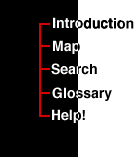

|
 |
Energy of a membraneNow consider an inflated balloon, the rubber is a stretched membrane. If you stick a pin in it then there is no problem guessing what happens... the balloon bursts with a bang.
This example is actually slightly more complicated than described because some of the energy is stored in the compressed air inside the balloon. However, for the moment we will consider only the energy energy in the membrane and not the energy in the compressed air. The balloon creates the sound, and maybe goes flying around the room, because energy that was stored in the membrane is released as it burst. How is that energy stored in the shape of the rubber membrane? In general, there are two parts to the energy of a membrane. These come from:
We will look at these two parts of the energy in turn; stretching energy and bending energy. In the case of the balloon the stretching energy is much more important, much larger, than the bending energy. This is the same as saying that it is much harder to strectch a balloon than to bend it.
|
|
|